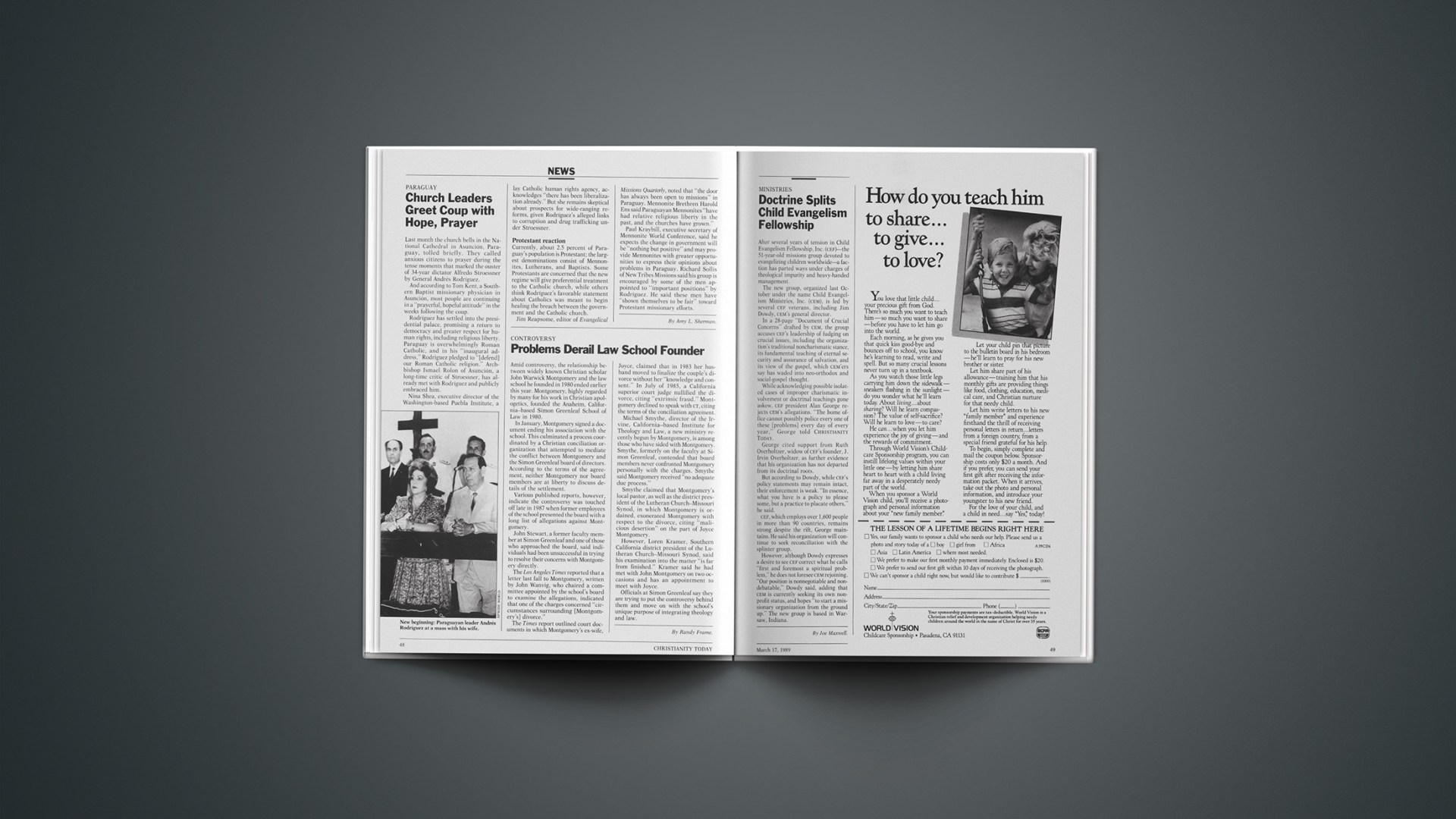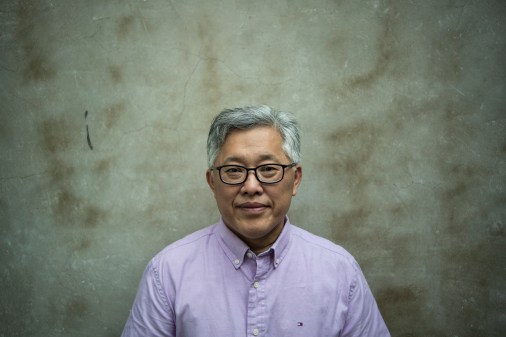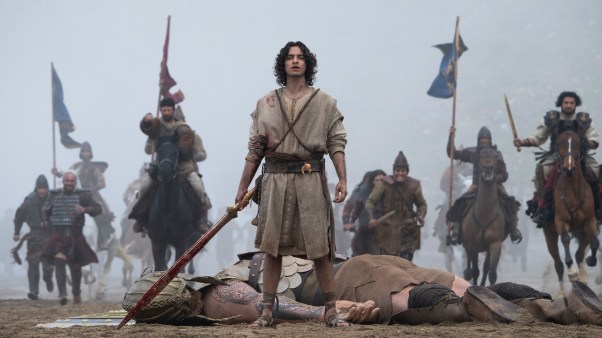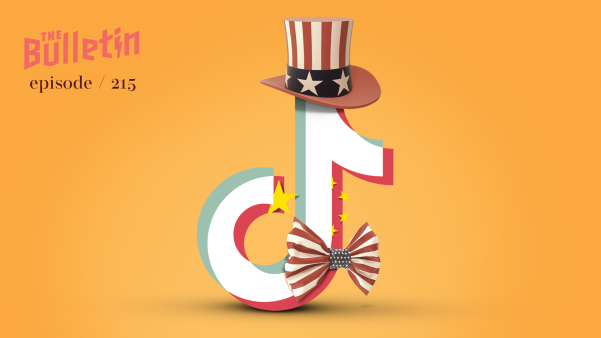Inquisition, by Edward Peters (Free Press, 362 pp.; $19.95, hardcover). Reviewed by William S. Stafford, associate professor of church history, Virginia Theological Seminary, Alexandria.
Did “the Inquisition” really occur, or were there merely many inquisitions throughout history? In his book Inquisition, Edward Peters, an eminent medieval historian at the University of Pennsylvania, traces the journey of inquisition through 21 centuries, from a legal procedure in ancient Roman law, through a modified use of that procedure for church discipline in the Middle Ages and early modern times, to the creation by Protestants and Enlightenment liberals of the mythical Inquisition, which has survived as an ideological whipping boy to the present day.
Peters is not chiefly interested in offering an addition to the literature on the actual historical inquisitions of the Roman church. Still less is he joining the many groups who used “the Inquisition” as a mythological darkness that would make their own light seem bright by comparison. His book is a commentary on an insight dear to modern historians: Any community relies on common patterns of thought to help define itself, and finds deviance from those patterns threatening to its integrity. Thus the Roman church established legal means (often gentler, because of their pastoral intent, than the secular courts surrounding them) to detect heretics, bring them to repentance, and to reaffirm the “orthodoxy” that kept society together.
There is a further pattern, however. Groups can define their own identity by developing an evil portrait of their enemies. Thus the Reformation created the myth of the Inquisition, a united, omnipresent, omnipotent engine of the pope to repress the gospel. The Enlightenment had its own use for that myth, as it attacked religious orthodoxy of any sort, and could turn it back even on Protestants who used power to repress heresy.
The myth of the Inquisition eventually became a rich field for the imagination, able to inspire great artists such as Verdi, Dostoevski, and Goya. The sober craft of historians, however, has gradually discredited the myth, left the actual inquisitions as yet one more field for social history, and can now view the myth’s career itself as an object of historical research.
History By The Tail
Inquisition is a tour de force. Peters holds an enormous field of material in view, from technical Roman law to political pornography. For the many modern evangelicals who have not even had contact with their own tradition’s anti-Catholic polemic, the whole story will seem strange and new, and frequently disorienting. Admittedly, the story is too many-sided for Peters to answer all questions. It is frustrating not to have some of the basics, however: Just how many Jews and conversos (Jewish converts to Christianity) were killed or harmed in the Spanish Inquisition? How common was complete exoneration of an accused person? If torture or execution was less common than for comparable secular courts, still, how common was it?
At times Peters strains the limits of his own competence. He is clearly not at home in the history of early Christianity, and even when dealing with eighteenth-century church history, he seems to think that “latitudinarians” were “dissenters.” One may also doubt that his simple distinction between myth and history will do. It is entirely clear that some anti-inquisition myth makers had a good deal of history by the tail, and that historians still have their own mythological axes to grind.
Where Inquisition has particular value is in helping its readers understand how subtle and ironic the flow of time can be. It is hard to leave its pages thinking about “relativism” and “absolutes” in quite the same way. Defenders of “orthodoxy” and proponents of “enlightenment” could commit parallel injustices, blind to the way they offered a mirror image to those of their enemies. Medieval Catholics could defend the truth that the Word became flesh by burning the flesh of those who denied it. Elizabeth could hang Catholics herself, while blistering the papists for their murderous Inquisition. Voltaire could attack the enemies of enlightened science by inventing absolute fictions about his opponents.
Peters tells his complex, fascinating story in as historical and relativistic a mode as possible. Yet the Christian reader may leave Inquisition’s pages yearning for the God who alone can judge in truth and mercy, and who is his own vindicator beyond the cruelties and fabrications of the humans he loves.
Born Brothers, by Larry Woiwode (Farrar, Strauss, and Giroux, 611 pp.; $19.95, hardcover). Reviewed by Kristine Christlieb, who teaches writing at Indiana University, South Bend.
Larry Woiwode’s latest novel, Born Brothers, is a companion to his critically acclaimed Beyond the Bedroom Wall. In Born Brothers, we are reacquainted with the Neumiller family, whom we met in the earlier novel, yet the primary focus is on the Neumillers’ oldest sons, Jerome and Charles. More specifically, the novel centers on Charles, the troubled younger brother.
Woiwode chronologically presents the two boys’ lives from their North Dakota childhood, through their adolescent years in Illinois (where the boys’ mother dies from complications during childbirth), to their adult careers (Jerome’s in medicine and Charles’s as a radio personality).
Although Charles does most of his growing up in Illinois and launches his career in New York, it is the North Dakota landscape that dominates his imagination. The Plains’ sparse horizon parallels Woiwode’s narrative style: Sometimes he withholds from us everything we think we need to know about a particular scene. Memories drift in and out with little reference to time or setting. The feel is disorienting. Yet in Woiwode’s use of language there is an abundant harvest.
One does not read Born Brothers, one listens to the lyricism of its language: “We do not all lead lives that leave others blind by their lyrical blaze.” With that sentence I realized I was being drawn through the book not by the pull of the plot, but by the strength of its images and the sound of its words.
Highlighted
Exchange of Values
In Why Settle for More and Miss the Best? (Word), futurist and church consultant Tom Sine offers penetrating insights into the radical nature of discipleship. As in his previous best seller, The Mustard Seed Conspiracy, Sine uses contemporary stories to prod Christians to exchange their cultural understandings of the Christian life for kingdom values.
“A disappointingly large number of Christian books, broadcasts, and sermons seem to encourage this limited view of discipleship by accepting the visions and values of American culture as an unquestioned given. By default we allow the secular culture to set the agenda for all the “non-spiritual” compartments of our lives. And then we try to work our faith in around the edges of already overcrowded lives.
You can be sure that in the first century the disciples of Jesus Christ weren’t doing Roman culture nine-to-five with church on Sundays! They understood that following Christ is a whole-life proposition that transforms life direction, values—everything.
Whatever commands our time, energy, and resources commands us. And if we are honest, we will admit that our lives really aren’t that different from those of our secular counterparts. I suspect that one of the reasons we are so ineffective in evangelism is that we are so much like the people around us that we have very little to which we can call them. We hang around church buildings a little more. We abstain from a few things. But we simply aren’t that different. We don’t even do hedonism as well as the folks around us … but we keep on trying.
As a result of this unfortunate accommodation, Christianity is reduced to little more than a spiritual crutch to help us through the minefields of the upwardly mobile life. God is there to help us get our promotions, our house in the suburbs, and our bills paid. Somehow God has become a co-conspirator in our agendas instead of our becoming a co-conspirator in His. Something is seriously amiss.”
Living On Self-Destruct
Born Brothers achieves its best success when masterfully recapturing the delights and disappointments of the boys’ early childhood years in North Dakota. The vividness also prepares us for the problems that Charles will face as an adult. Charles’s childish Halloween pranks earn his mother’s warning, “If you enjoyed yourself tonight, there’s a trait in you you’re going to have to watch out for.”
Years later, Charles’s destructiveness turns inward. While Jerome lives a life of quiet duty, compromise, and comfort, Charles lives on the edge. He drops out of college, quits a promising job in television, falls in love with poisonous women, and nearly loses the one woman who does truly care about him. His inability to control his drinking, even during a short visit with his terminally ill father, leads him eventually to attempt suicide.
In Charles, Woiwode shows us a human being who needs redemption. He has nowhere to turn—his marriage has fallen apart, his career is in jeopardy, and his father is dead.
What Woiwode does not show us is the conversion experience. Woiwode’s treatment of Christianity is unapologetic, but carefully tended. And in the end, perhaps the strongest presentation of faith comes not from Charles but from his father, a Catholic, whose genuine piety and gentleness lasts throughout a lifetime and through more than the usual share of family trials.
The Life and Thought of Calvin
More than 450 years have passed since the publication of his Institutes of the Christian Religion, but the life and thought of John Calvin remain as intriguing and influential as ever.
Hailed by many as the Reformation’s supreme Bible teacher, the Genevan pastor produced not only running commentary on Scripture, but also a view of the Christian’s relationship to culture that charted the course of Europe and the nations-to-be of the New World.
In the following survey of recent releases, theologian Donald K. McKim, interim pastor at Trinity Presbyterian Church, Berwyn, Pennsylvania, highlights significant works that will enhance Calvin studies for both scholars and interested readers. McKim is the author of Theological Turning Points (John Knox).
The acclaimed book by historian William J. Bouwsma John Calvin: A Sixteenth-Century Portrait (Oxford, $8.95, paper), puts Calvin squarely in his own time and shows how he dealt with his problems. Bouwsma presents a very human Calvin who lived with one foot in the Renaissance and one in the Reformation. The author shows competing elements in Calvin’s makeup—each struggling for expression—which resulted in tensions and paradoxes the Reformer never fully resolved. This Calvin portrait is a gripping one.
The fine English translation of Alexandre Ganoczy’s The Young Calvin (Westminster, $24.95) presents the formative influences that shaped Calvin’s early life. Ganoczy traces his religious development (1523–39) and shows the thinkers to whom Calvin was indebted for his emerging theology. He examines the content of Calvin’s first Institutes (1536) and the question of his conversion, too. This is a masterful study that has been an important resource since its publication in French in 1966. It is readable and clearly written.
Views on humanity
More technical are Thomas F. Torrance’s The Hermeneutics of John Calvin (Scottish Academic Press) and Mary Potter Engel’s John Calvin’s Perspectival Anthropology (Scholars, $13.95, paper). Torrance explores Calvin’s theoretical views on how we know (epistemology) and how we interpret things (hermeneutics). Engel takes a fresh look at Calvin’s views on humanity, including the concept of humanity created in “the image of God,”
Calvin’s Old Testament Commentaries (T. and T. Clark, distributed by Augsburg/Fortress, $34.95), by T. H. L. Parker, focuses on how Calvin approaches his exposition of the Old Testament in sermons, lectures, and commentaries. Here we learn that during 15 years, Calvin preached more than 2,000 sermons on the Old Testament in addition to his lectures and written commentaries. He lectured on consecutive days of the week in simple, understandable Latin for an hour at a stretch, without any notes, and usually with less than an hour to prepare.
Calvin Studies IV (available from the Davidson Presbyterian Church, $4.00) is a collection of papers from the colloquium held in Davidson, North Carolina, in January 1988. These are all superb studies by top Calvin scholars, including pieces on Calvin’s use of figurative language, his interpretation of the Psalms, and his views on the office of elder. Physician Charles L. Cooke provides an unusual and fascinating essay on Calvin’s illnesses. Cooke shows that Calvin suffered from chronic gout, pulmonary tuberculosis, kidney stones, pleurisy, intestinal parasites, hemorrhoids, irritable colon, and migraine headaches, among other maladies.
Brotherly Love
In his most vexing twist of all, Woiwode masks from his readers the meaning of Charles’s relationship with his brother. Why is there such a strong bond between brothers who share such different values? The question remains as open as the North Dakota prairie.
Perhaps it is Charles’s willingness to take risks that open him to Christianity, an inherently risky life. Jerome plays it safe, remains comfortable, and refuses to commit himself to anything in particular. When his sister asks if he believes in reincarnation, he replies, “I believe in everything.”
Born Brothers is not an easy book to understand, but Woiwode’s control of language and spiritual vision makes it worth the reading, the effort, and the risk.










